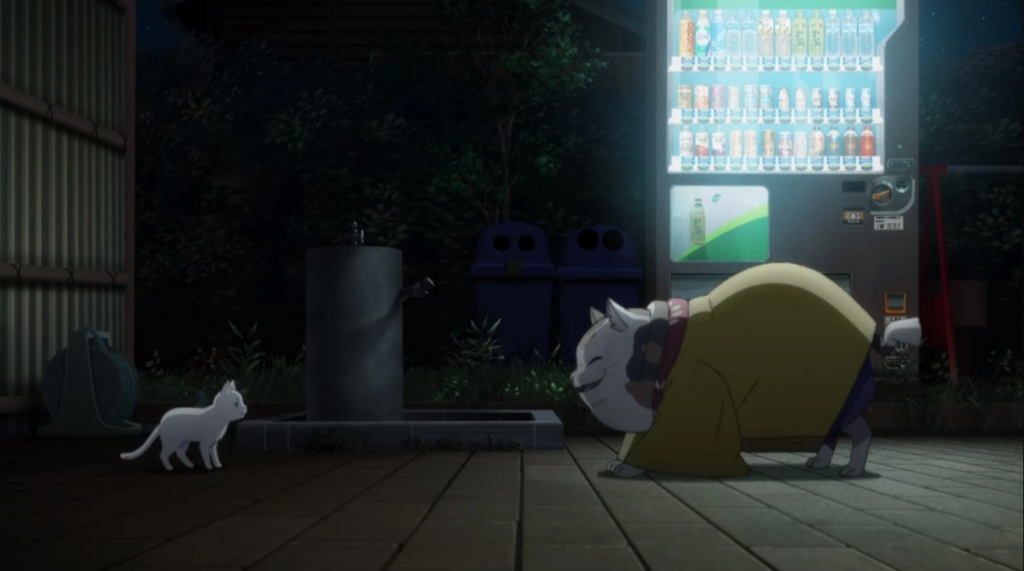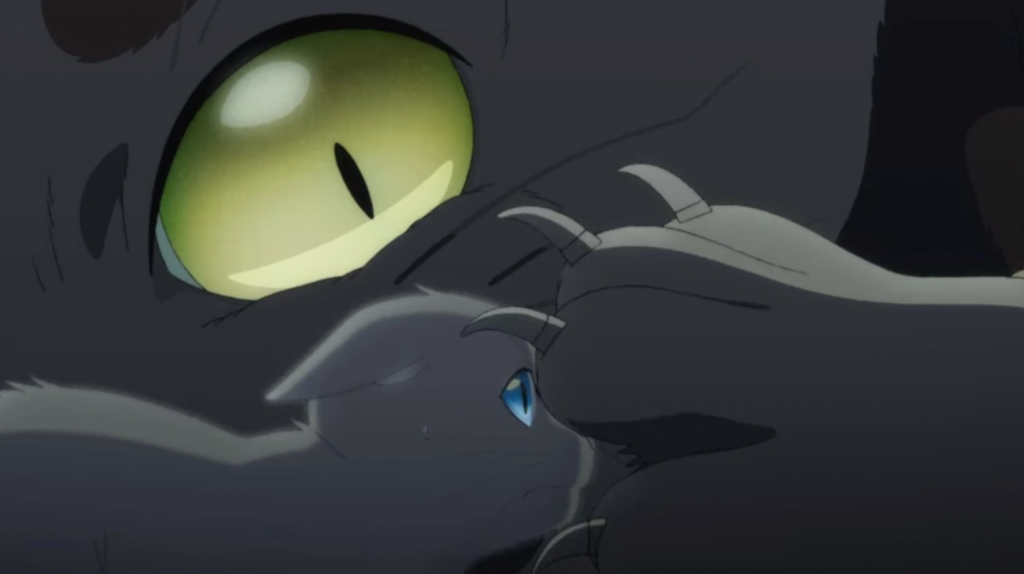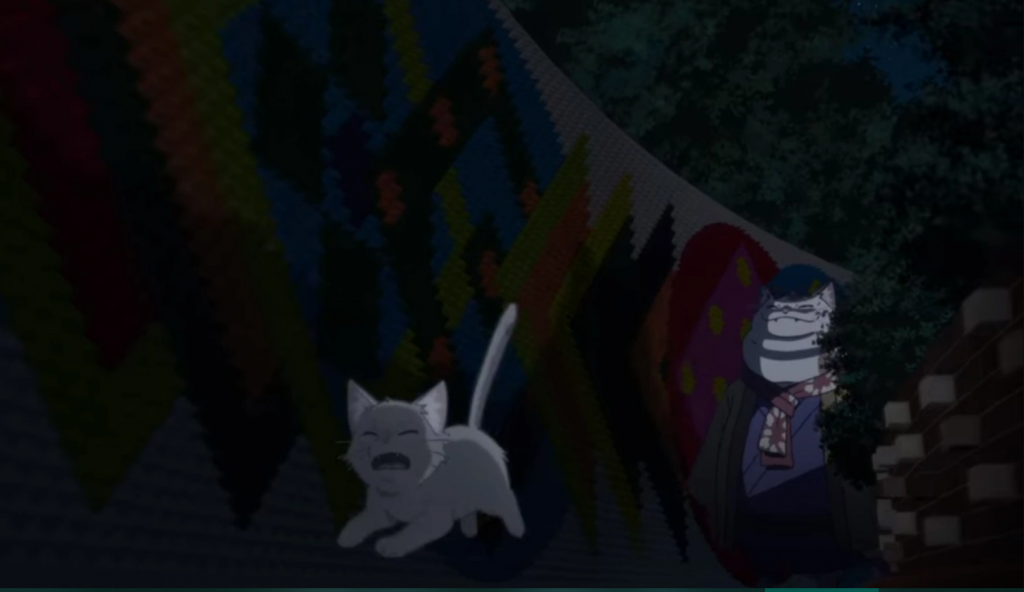In A Whisker Away, the 14-year-old Miyo Sasaki takes extreme measures in order to be close to her school crush Kento Hinode, even accepting a cat mask from a dubious mask seller to be able to transform into a cat. Upon closer examination, it quickly becomes apparent that Junichi Sato & Tomotaka Shibayama tackle much darker topics with their shape-shifting heroine than just telling a romantic story. The ability to morph into a cat not only allows Miyo to be closer to Hinode, but most importantly to escape her familial problems as well as her depression. Shedding her human skin makes it possible for her to have a break from her life, a temporary suicide.

In a sequence after accepting a cat mask from the mask seller, both meet again as anthropomorphic cats. The scene opens with a wide shot of cat Miyo exiting a public bathroom. It is obvious that despite being in a cat body, Miyo is still very much human on the inside, washing her paws and being repulsed by the idea of licking her bottom instead of wiping it. As soon as the mask seller enters the scene by squeezing through a vending machine, standing up on his hind-legs, ominous and mysterious background music starts playing. Even in the wide shot that follows, both cats on all fours, the mask seller appears to be towering over Miyo (Figure 1). The power dynamic between both is established. It becomes evident that what may appear on screen as two ordinary cats is something else entirely: in a transcendental state of being, a human is confronted with a supernatural or even demonic other.

Figure 2 
Figure 3
The mask seller tells Miyo that she should enjoy being a cat, for “it will be such a waste if you don’t”[1], hinting at the fact that he intends to take Miyo’s human life span no matter her decision (Figure 2). After she declines and tries to flee, the mask seller starts following her (Figure 3). His face is lit and simultaneously concealed by shadows while he explains that he sells cat masks to humans who want to be cats and vice versa. Miyo is shown in the front of the frame, small and distressed, the mask seller almost hovering over the ground on two legs while requesting her human face. Miyo, much in the same way as other people dealing with a mental illness, is confronted with her own demon, literally being haunted by him. In ways others would abuse drugs and alcohol, Miyo uses her cat mask to transform into another being until it becomes too late to return to her own human life. The film features a human – animal boundary which is suggested to be penetrable by supernatural forces. Because neither are able to communicate with each other, becoming a cat permanently would result in Miyo being shut out of the human world – thus, being dead. Like an allegory to suicide, Miyo’s preferred method of escapism would lead to her trespassing a boundary to the cat world, or – from a human perspective – the afterlife. Using cats as a representation therefore functions as a commentary on the proximity of suicide. Miyo finds herself – a whisker away – from making a decision that cannot be reversed.
References
[1] Junichi Sato & Tomotaka Shibayama, A Whisker Away (Studio Colorido, 2020).